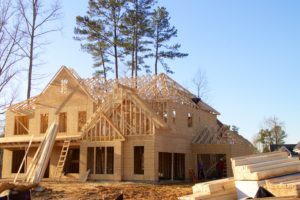
The good news is that single family permits have increased from last year. Through April 2022 single family permits rose to 73 compared to 62 in 2021. That’s not much of an increase but it’s a good start with the expectation that lower framing prices will encourage builders and new home buyers to reconsider starting new homes. The bad news is that the average single family permit was $610,009 which does not include any land value. That high valuation makes a new home a luxury for trade-up buyers with significant equity and/or cash on hand but does shut out the middle of the market which is where the majority of local buyers reside. Other good news from the April building safety activity report includes an almost $50 million increase in all permit activity, including commercial and remodeling. That total YTD is $194,852,000. More increases are expected as the summer construction season is just getting underway. All this increased activity is despite the Fed’s push up of interest rates and rising inflation.
While the rest of the nation’s builders wrestle with declining new home starts, Alaska appears to be managing inflation, labor shortages, supply side constraints and interest rate hikes better than the rest of the nation. Our 14% increase in average sales price for single family homes is moderate (although painful for many first time homebuyers) compared to the often quoted 20% increase in home values in the lower 48. Our low housing inventory of less than one month is in sharp contrast to a nine month supply of new homes nationally. Many of us remember the housing we experienced in the mid-1980s with over 6,000 housing permits in just one year. Frankly, I’d rather work with our current market conditions than face the loss of equity and pride of ownership in the thousands of homeowners who left their keys at the banks’ doorsteps as they drove out of Alaska in the great recession of the late 1980’s.
But we can do more to make housing more attainable. Last year at this time, there were 24 duplex units permitted. This year there is only 8. The duplex, whether owner-occupied as a single unit, or as a duplex condo with separate ownership on each side, is a low density opportunity that is frequently overlooked. The townhouse style building is a step up from the stacked condo and although each unit is shared with a common wall, it can function like a single family with first floor living, garage, side and backyard. The shared wall allows for the elimination of one of the five foot-side yards which creates a slightly higher density in terms of land planning and eliminates the extra cost of a water/sewer pig-tail into the foundation. Also, triplex and four permitting standards converting to residential vs. commercial can assist in lower costs as well as a reduction in permit fees.
In the lower 48, investors are buying up entire subdivisions and creating rental communities. These aren’t rent to own properties but investors seeking a high cap rate and ultimate sale at future values. Although low inventory is frustrating for buyers competing with multiple offers, our tight housing market is a more stable market than in the lower 48. Potential buyers are encouraged to get not just pre-qualified but actually pre-approved which means all the way through the underwriting approval process for a specified mortgage amount. Bottom line, Alaska’s housing shortage was decades in the making and it’s not going to be solved this year or in the next few years.
As always, thank you for reading my column and for your referrals over the years. There is nothing I enjoy more than helping my clients with their real estate needs. Feel free to text/give me a call at 907-229-2703.

 Connie Yoshimura is the Owner and Broker of Berkshire Hathaway HomeServices Alaska Realty. With over 40 years of residential real estate experience, she continues to be a leader in Alaska’s housing market. Most recently, she sold the highest-priced home ever recorded in the Alaska MLS.
Connie Yoshimura is the Owner and Broker of Berkshire Hathaway HomeServices Alaska Realty. With over 40 years of residential real estate experience, she continues to be a leader in Alaska’s housing market. Most recently, she sold the highest-priced home ever recorded in the Alaska MLS.
I always enjoy your thoughts and insight.